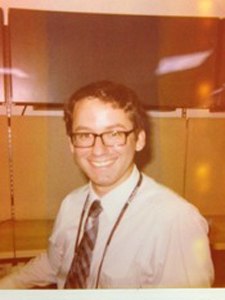Program Information
Modeling Cardiac Induced Lung Tissue Motion for a Quantitative Breathing Motion Model
B White1,2*, D Thomas1, J Lamb1,2, S Jani1,2, S Gaudio1, Y. Min1, S Srinivasan4, D Ennis2,3,4, A Santhanam1,2, D Low1,2, (1) UCLA Department of Radiation Oncology, Los Angeles, CA, (2) UCLA Department of Biomedical Physics, Los Angeles, CA, (3) UCLA Department of Radiological Sciences, Los Angeles, CA, (4) UCLA Department of Bioengineering, Los Angeles, CA,
WE-A-134-8 Wednesday 8:00AM - 9:55AM Room: 134Purpose: To improve the accuracy of a quantitative breathing motion model by developing a cardiac-induced lung tissue motion model from MRI data.
Methods: 10 healthy volunteers were imaged on a 1.5T MR-scanner. A total of 24 short-axis and 18 radial views were acquired during a series of 12-15s breath-holds. The planar views were combined to create a 3D view of the anatomy. Each view contained 30 equal-partitioned frames beginning with the end-diastolic cardiac phase. A single-level 3D optical flow deformable image registration algorithm was used to measure the difference in tissue position between the end-diastolic image and the remaining phases. The maximum displacement magnitude and direction obtained in this manner was defined as g(X₀), the cardiac-induced lung tissue motion. The motion model was assumed to be linear and the motion trajectory a product of g(X₀) and h, where h was a phase-dependent scalar that had a value of 0 at end-diastole and 1 at the maximum tissue displacement phase. The model was evaluated by comparing the cardiac-induced lung tissue motion, using a lower motion threshold of 0.3mm, with the residual model error.
Results: The deformable image registration algorithm was found to be highly accurate. Lung tissue near the myocardium was observed to have motion as large as 5mm. The average relative error for the model was 36.5% for sub-millimeter voxel motion. The average relative error decreased for greater voxel motion to 5.6% for >3mm voxel motion. The overall average model residual error was 0.19±0.18mm.
Conclusion: The magnitude of cardiac-induced lung tissue displacement was enough to degrade the accuracy of quantitative lung tissue motion modeling. The use of a single location-independent phase dependent term provided suitable model accuracy. Introducing a cardiac motion term has the potential to reduce the error in breathing motion models caused by uncompensated cardiac-induced lung tissue motion.
Funding Support, Disclosures, and Conflict of Interest: This work supported in part by NIH R01CA096679 and R01CA116712
Contact Email:


